1. A World of Computers
1.1. Computers are everywhere
2. Examples of Computer Usage
2.1. Home User
2.1.1. Personal financial management
2.1.2. Communications
2.2. Small Office/Home Office User
2.2.1. Look up information
2.2.2. Send and receive e‐mail messages
2.3. Mobile User
2.3.1. Connect to other computers on a network or the Internet
2.3.2. Transfer information
2.4. Power User
2.4.1. Work with multimedia
2.4.2. Use industry‐specific software
2.5. Enterprise User
2.5.1. Communicate among employees
2.5.2. Process high volumes of transactions
3. Categories of Computers
3.1. Personal computers
3.1.1. A personal computercan perform all of its input, processing, output, and storage activities by itself
3.1.2. Two popular architectures are the PC and the Apple
3.1.2.1. Desktop computer
3.2. Mobile computers and mobile devices
3.2.1. Mobile Computer
3.2.1.1. Personal computer you can carry from place to place
3.2.1.1.1. Notebook computer
3.2.2. Mobile Device
3.2.2.1. Computing device small enough to hold in your hand
3.2.2.1.1. PDA
3.3. Game consoles
3.3.1. A game consoleis a mobile computing device designed for single‐player or multiplayer video games
3.4. Servers
3.4.1. A servercontrols access to the hardware, software, and other resources on a network
3.4.1.1. Provides a centralized storage area for programs, data, and information
3.5. Mainframes
3.5.1. A mainframeis a large, expensive, powerful computer that can handle hundreds or thousands of connected users simultaneously
3.6. Supercomputers
3.6.1. A supercomputeris the fastest, most powerful computer
3.6.1.1. Fastest supercomputers are capable of processing more than one quadrillion instructions in a single second
3.7. Embedded computers
3.7.1. An embedded computeris a special‐purpose computer that functions as a component in a larger product
3.7.1.1. Consumer Electronics
3.7.1.1.1. Mobile and digital telephones
3.7.1.2. Home Automation Devices
3.7.1.2.1. Thermostats
3.7.1.3. Automobiles
3.7.1.3.1. Antilock brakes
3.7.1.4. Process Controllers and Robotics
3.7.1.4.1. Remote monitoring systems
3.7.1.5. Computer Devices and Office Machines
3.7.1.5.1. Keyboards
4. What Is a Computer?
4.1. A computeris an electronic device, operating under the control of instructions stored in its own memory
5. Advantages and Disadvantages of Using Computers
5.1. Advantages of Using Computers
5.1.1. Speed
5.1.2. Reliability
5.1.3. Consistency
5.1.4. Storage
5.1.5. Communications
5.2. Disadvantages of Using Computers
5.2.1. Health Risks
5.2.2. Violation of Privacy
5.2.3. Public Safety
5.2.4. Impact on Labor Force
5.2.5. Impact on Environment
6. Networks and the Internet
6.1. A networkis a collection of computers and devices connected together, often wirelessly, via communications devices and transmission media
6.2. The Internet is a worldwide collection of networks that connects millions of businesses, government agencies, educational institutions, and individuals
6.3. People use the Internet for a variety of reasons:
6.3.1. Communicate
6.3.2. Research and Access Information
6.3.3. Shop
6.3.4. Bank and Invest
6.3.5. Online Trading
6.3.6. Entertainment
6.3.7. Download Music
6.3.8. Share Videos
6.3.9. Web Application

